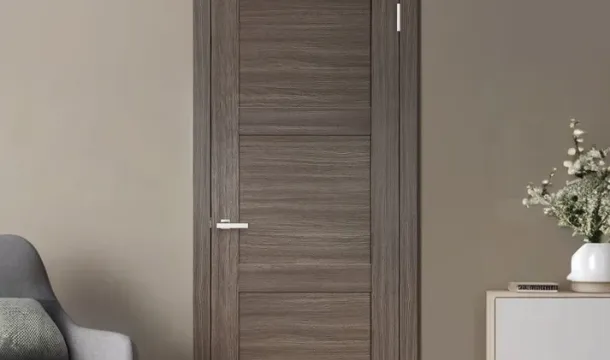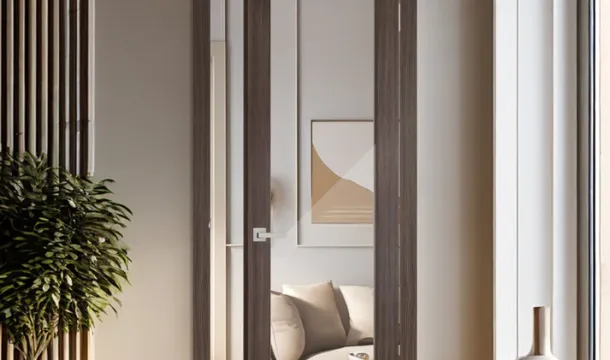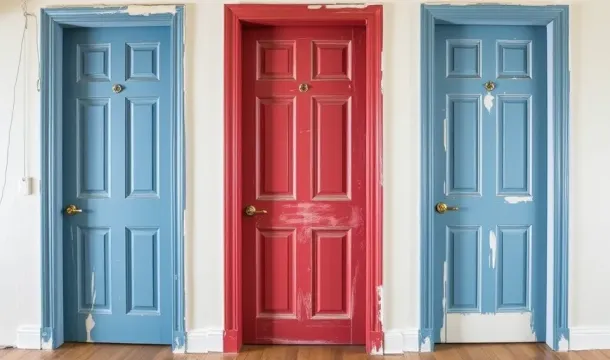Choosing Textured Finishes to Enhance Your Door's Unique Style
Popular Articles
- Choosing the Perfect Interior Doors for Your Canadian Home
- A Complete Guide to Choosing Interior Doors for Canadian Homes
- The Challenges of Painting Interior Doors
- Understanding Interior Doors and Their Role in Your Home
- The Perfect Blend of Reliability and Design: Interior Doors with Italian "Sandwich" Technology
Textured finishes transform ordinary doors into focal points that express personality and complement interior design. Selecting the right texture depends on factors such as material compatibility, lighting conditions, and maintenance requirements. For example, a rough wood grain finish adds warmth and depth in rustic or farmhouse settings, while a smooth matte plaster texture suits modern minimalist interiors seeking subtle tactile interest.
Consider how light interacts with the surface: glossy textures reflect more light, creating visual contrast and highlighting architectural details; matte or suede-like finishes absorb light for understated elegance. Combining multiple textures on door panels can also produce dynamic effectsthink embossed geometric patterns paired with natural wood tones for contemporary flair.
Practicality matters when choosing textured finishes. High-traffic areas benefit from durable coatings like textured laminates or resin-based surfaces that resist scratches and stains. Meanwhile, painted textures allow customization through layering techniques but require regular upkeep to maintain their appearance.
Selecting Texture Types for Doors
For a subtle tactile effect, consider a matte wood grain texture, which highlights natural patterns while reducing glare. This finish works well with hardwood doors like oak or maple and pairs seamlessly with both modern and rustic interiors.
Embossed textures add dimensionality without overwhelming the design. Raised geometric patterns or linear grooves create visual interest and improve grip, making them ideal for frequently used interior doors such as pantry or closet doors. Materials like medium-density fiberboard (MDF) handle embossing efficiently while maintaining affordability.
Metallic finishes with brushed or hammered textures introduce industrial flair and durability. Aluminum or steel doors featuring these surfaces resist fingerprints and scratches, making them suitable for entryways exposed to high traffic or outdoor conditions.
Textured glass inserts offer a balance between privacy and light diffusion. Patterns like frosted ripples or seeded textures soften incoming light while obscuring visibility, perfect for bathroom or office doors requiring discretion without sacrificing brightness.
For high-traffic areas demanding resilience, polyurethane-based textured coatings mimic stone or concrete surfaces while providing impact resistance and easy maintenance. These finishes suit commercial-style interiors seeking robust yet stylish door solutions.
Matching Finishes with Door Materials
For solid wood doors, oil-based or natural wax finishes enhance the grain's depth and maintain moisture balance. Hardwoods like oak and walnut benefit from matte or satin textured finishes that highlight their intricate patterns without overwhelming them. Avoid overly glossy textures on these surfaces, as they can create an artificial look and emphasize imperfections.
Engineered wood doors require finishes with higher durability to protect against swelling and warping. Water-based polyurethane with a fine grain texture offers protection while preserving the door's smoothness. Textured paints mimicking concrete or stone are effective for MDF doors, providing visual interest without compromising the substrate's integrity.
Metal Doors
Powder-coated finishes with a subtle hammered or pebbled texture improve scratch resistance and hide fingerprints on steel or aluminum doors. Matte or low-sheen metallic textures complement industrial designs while preventing glare. For wrought iron doors, consider layered patinas or textured rust-resistant coatings that emphasize their handcrafted appeal.
Glass and Composite Doors
Textured glass panels paired with sleek metal or wood frames create a balanced contrastfrosted, ribbed, or sandblasted glass enhances privacy while adding dimensionality. Composite doors often work well with embossed vinyl finishes replicating wood grain; pairing these with semi-gloss protective layers increases both aesthetics and weather resistance.
Maintaining and Refreshing Textured Surfaces
Clean textured door surfaces using a soft-bristle brush or microfiber cloth to remove dust from crevices without damaging the finish. Avoid harsh chemicals; instead, use mild soap diluted in water for stubborn dirt. Test any cleaning solution on a small hidden area before full application.
For minor scratches or scuffs on painted textures, lightly sand the affected spot with fine-grit sandpaper (220-320 grit), then apply matching paint with a small brush or sponge to blend seamlessly. Textured stains can be refreshed by applying a thin coat of stain using a stippling motion to maintain depth and avoid flattening the texture.
If your textured surface is sealed with varnish or polyurethane, periodic reapplication ensures durability and sheen. Use a compatible clear coat applied with a foam brush following manufacturer instructions, focusing on even coverage without pooling in grooves.
In cases of deeper damage like chips or dents, fill imperfections with an appropriate fillerwood putty for wooden doors or acrylic-based fillers for synthetic materialsthen retexture by imprinting patterns using specialized tools or textured rollers before repainting.
Avoid excessive moisture exposure to prevent swelling or warping, especially on natural wood textures. Installing protective door hardware such as kick plates can reduce wear in high-contact areas, preserving both texture and overall appearance over time.
Popular Articles
- Choosing the Perfect Interior Doors for Your Canadian Home
- A Complete Guide to Choosing Interior Doors for Canadian Homes
- The Challenges of Painting Interior Doors
- Understanding Interior Doors and Their Role in Your Home
- The Perfect Blend of Reliability and Design: Interior Doors with Italian "Sandwich" Technology

Choosing the Perfect Interior Doors for Your Canadian Home

A Complete Guide to Choosing Interior Doors for Canadian Homes
